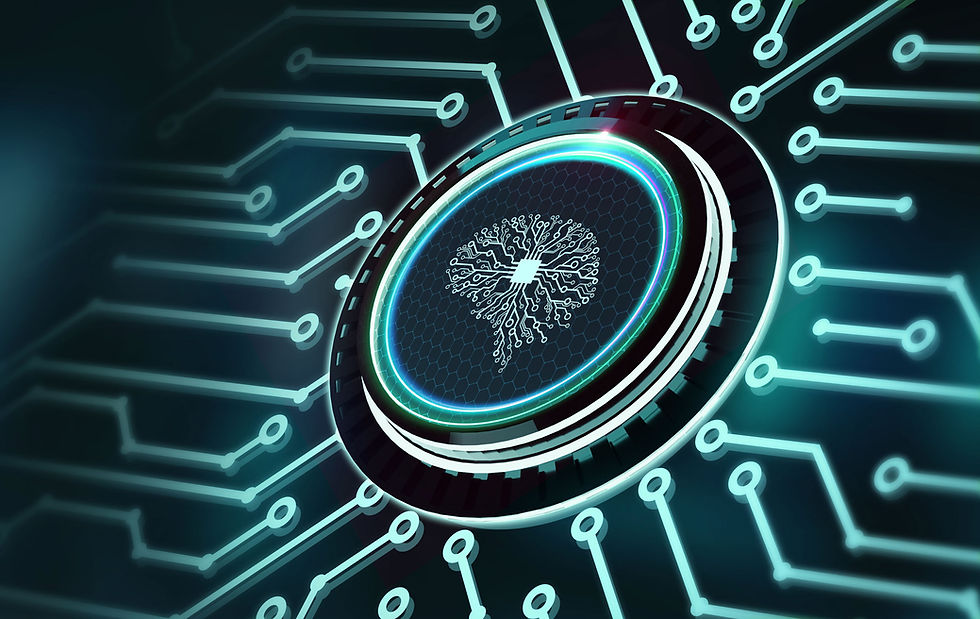Promising Treatment for Long-Term Stroke Recovery
- Ashby Glover
- Nov 19, 2023
- 3 min read

Doctors and researchers continually put forth efforts to create innovative ways to treat health crises. Some treatments are developed to prevent death during a medical emergency, such as administering alteplase soon after a stroke or performing surgery such as a carotid endarterectomy if the blockage causing the stroke is especially severe.1 Once a patient survives their ordeal, treatments begin to focus on recovery. While the majority of people who experience a stroke survive, up to 50% of survivors experience a chronic disability that often requires them to receive assistance for daily tasks.2 With this in mind, researchers have been working to improve long-term recovery for persistent neurological issues after stroke. Technological leaps for this phase of stroke recovery have been slow, but a recent study has brought new hope for advancements.
A study from the Cleveland Clinic has shown promising results in a small-scale trial testing the effect of Deep Brain Stimulation (DBS) for post-stroke rehabilitation patients. The trial enrolled participants with “moderate-to-severe upper-extremity impairment” resulting from a unilateral middle cerebral artery stroke 12 to 36 months prior.3 Electrodes were implanted into the cerebellum of the participants’ brains and connected to a pace-maker-like device, which delivers small electric pulses intended to help them recover control of their movements.4 The DBS device targets the dentate nucleus, which has been shown through decades of animal studies to be “a key connector that helps link the cerebellum to the motor cortex, which controls voluntary movements.”5 After the surgery, the patients underwent several months of physical therapy. They began with the DBS device turned off for several weeks and then turned on for four to eight months. The most significant improvements were observed once the device was turned on.6
“There are currently no effective methods to improve the outcomes of physical rehabilitation for the hundreds of thousands of stroke survivors. The results of the study found that deep brain stimulation, paired with physical therapy, improved movement in patients who were more than a year out from their stroke and whose motor improvements had largely plateaued. This tells us the research warrants further investigation in larger patient samples.”7
Dr. Kenneth Baker, Cleveland Clinic Lerner Research Institute
Of the twelve participants in the study, nine of them improved to a degree that is meaningful in stroke rehabilitation, displaying improvement in both motor impairment and function. None of the participants experienced any significant complications.8 This trial demonstrates that using the DBS device is safe and feasible and invites the opportunity to test it further with a larger patient group. Physical therapy helps reduce post-stroke symptoms, but its benefits often decrease after a year. In contrast, the study found that the length of time since a patient’s stroke did not seem to affect the potential for their improvement using the DBS device.9 The dedication of researchers to finding a solution to long-term impairment following a stroke has been ongoing for years, and this ground-breaking trial presents an inspiring potential for future studies.
“The quality-of-life implications for study participants who responded to therapy have been significant. This gives us a potential opportunity for much-needed improvements in rehabilitation in the chronic phases of stroke recovery.”10
Dr. Andre Machado, Chair of Cleveland Clinic’s Neurological Institute
References
1. “Treatment: Stroke.” National Health Service, September 13, 2022. https://www.nhs.uk/conditions/stroke/treatment/
2. Connie W. Tsao, Aaron W. Aday, Zaid I. Almarzooq, Alvaro Alonso, Andrea Z. Beaton, Marcio S. Bittencourt, Amelia K. Boehme, Alfred E. Buxton, April P. Carson, Yynonne Commodore-Mensah, et al. “Heart Disease and Stroke Statistics - 2022 Update: A Report from the American Heart Association.” Circulation 145, no. 8 (2022): e153–e639. doi: 10.1161/CIR.0000000000001052
3. Kenneth B. Baker, Ela B. Plow, Sean Nagel, Anson B. Rosenfeldt, Raghavan Gopalakrishnan, Cynthia Clark, Alexandria Wynant, Madeleine Schroedel, John Ozinga IV, Sara Davidson, et al. “Cerebellar deep brain stimulation for chronic post-stroke motor rehabilitation: a phase I trial.” Nature Medicine 29 (2023): 2366-2374. doi: 10.1038/s41591-023-02507-0
4. Halle Bishop and Alicia Reale-Cooney. “Cleveland Clinic Study Shows Deep Brain Stimulation Encouraging for Stroke Patients.” Cleveland Clinic, August 14, 2023. https://newsroom.clevelandclinic.org/2023/08/14/cleveland-clinic-study-shows-deep-brain-stimulation-encouraging-for-stroke-patients/
5. “Stroke patients may benefit from brain stimulation.” National Institutes of Health. nih.gov. September 5, 2023. https://www.nih.gov/news-events/nih-research-matters/stroke-patients-may-benefit-brain-stimulation
6. Bishop, “Cleveland Clinic Study.”
7. Bishop, “Cleveland Clinic Study.”
8. Bishop, “Cleveland Clinic Study.”
9. “Stroke patients may benefit.”
10. Bishop, “Cleveland Clinic Study.”



Comments